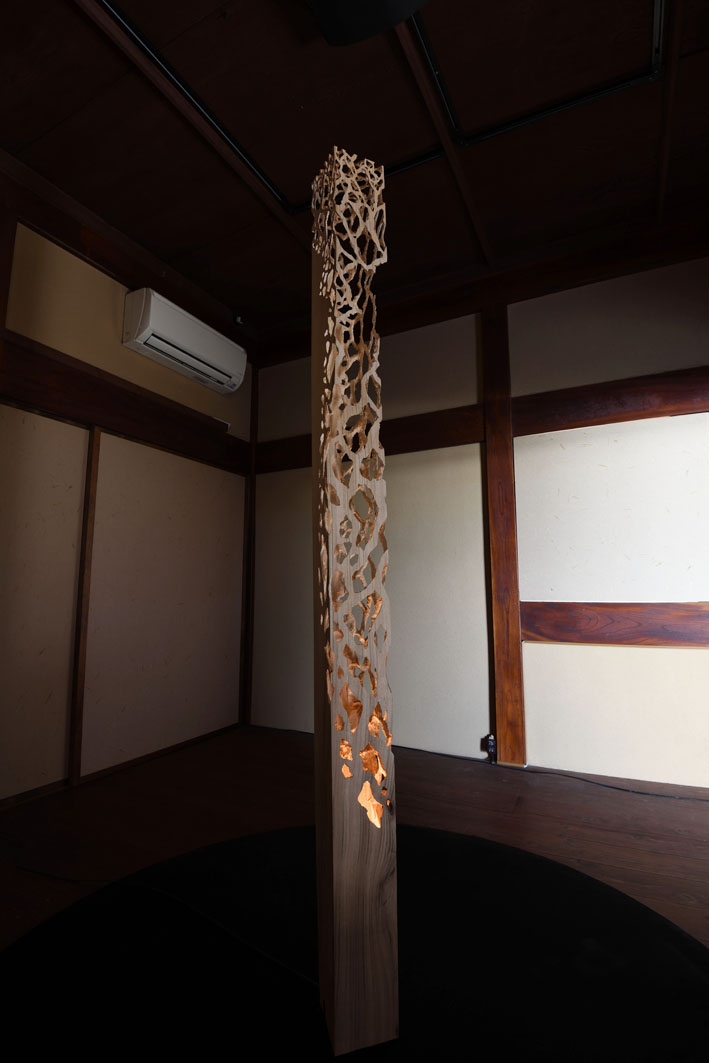Sacred boundary -聖域- Fuji no Yama Biennale 2020
Material : camphor wood, silk thread #50, UV LED light, Acrylic, Wood
I was in Europe in April 2020 when the corona disaster swept all over the world.
Then I saw an impressive TV news clip.
At a train station in France, a medical worker who is in protective clothing
carried a tray of a critically COVID-19 patient with an oxygen inhaler onto a train.
It was the TV news that the ICU in France was full and that Germany had accepted a critically COVID-19 patient as an emergency measure.
It was like a scene from a science fiction movie, a strange image that seemed somehow removed from reality.
It reminded me of the opening scene of the movie "Solaris",
which I had seen when I was a student, in which people were moving silently along Tokyo city Highway.
It also reminded me of the original story I had read at the time.
After returning to Japan with no sense of reality,
I researched the history of the Mt. Fuji, perhaps because I felt a strange coincidence between Solaris and Fuji,
where the deceased appear and disappear, just like in Ugetsu Monogatari and Noh.
世界中をコロナ禍が席巻した2020年4月、私は欧州にいた。
そこで、ある印象的なニュース映像を観た。フランスのとある鉄道駅で、酸素吸入器を付けた重症患者のトレーを防護服の医療従事者が無言で電車に乗せている。
やがて、音も無く動き始める電車は、ドイツへ向かう。フランスのICUが満床で、緊急措置としてドイツが重症患者を受け入れたことを伝えるTVニュースだった。
まるでSF映画のワンシーンのような、どこか現実離れした奇妙な映像だった。
それを観た時に、学生時代に鑑賞した「ソラリス」という映画の冒頭のシーン、無音で首都高を移動する映像を思い出した。
それと共に、当時読んだ原作「ソラリスの陽のもとに」を思い出したのだ。
現実感がないままに帰国して、霊峰富士の山にまつわる歴史を調べていくうちに、雨月物語や能のように、
亡き人の姿が現れては消えるソラリスと、霊峰富士が、私の内で奇妙な符合を感じたのかもしれない。
